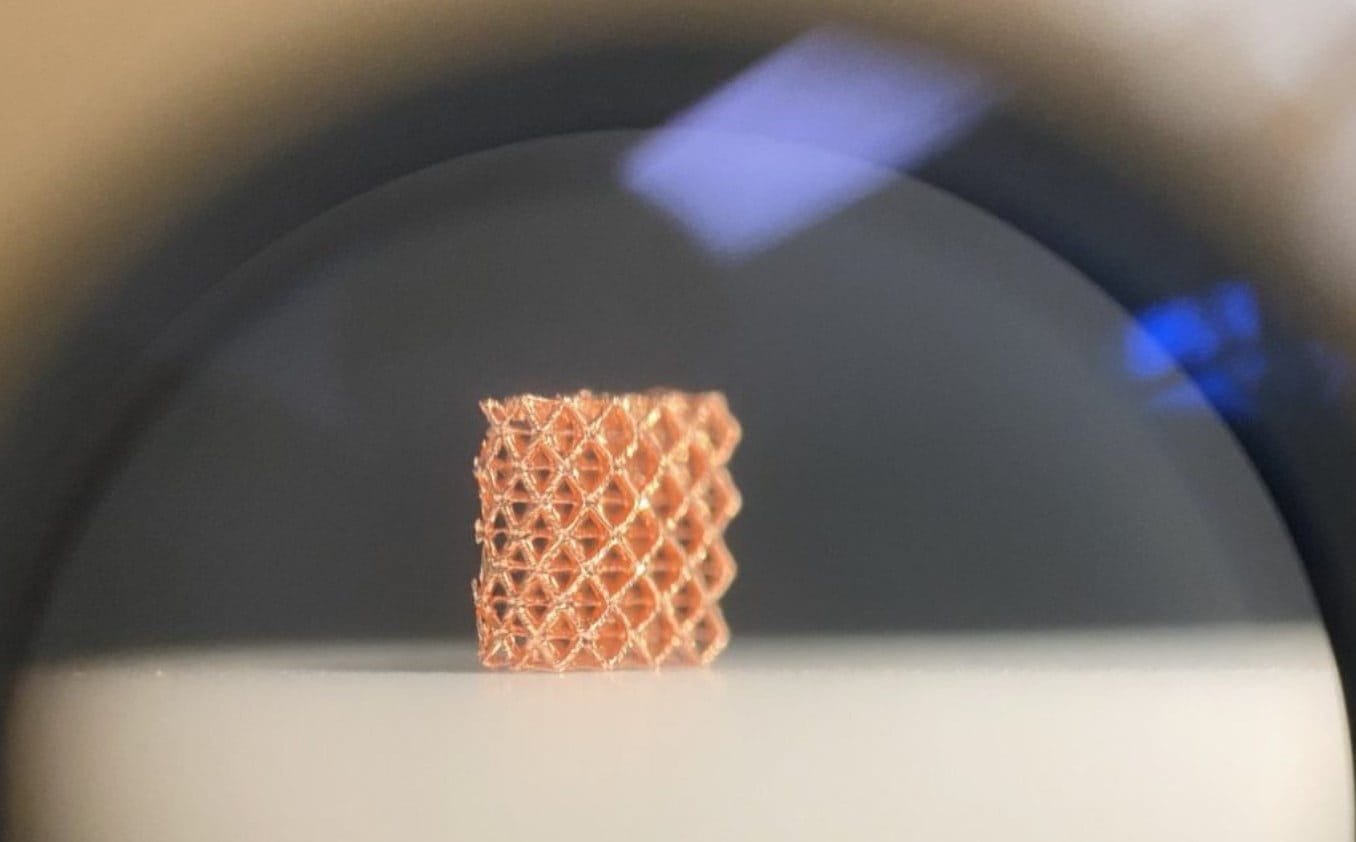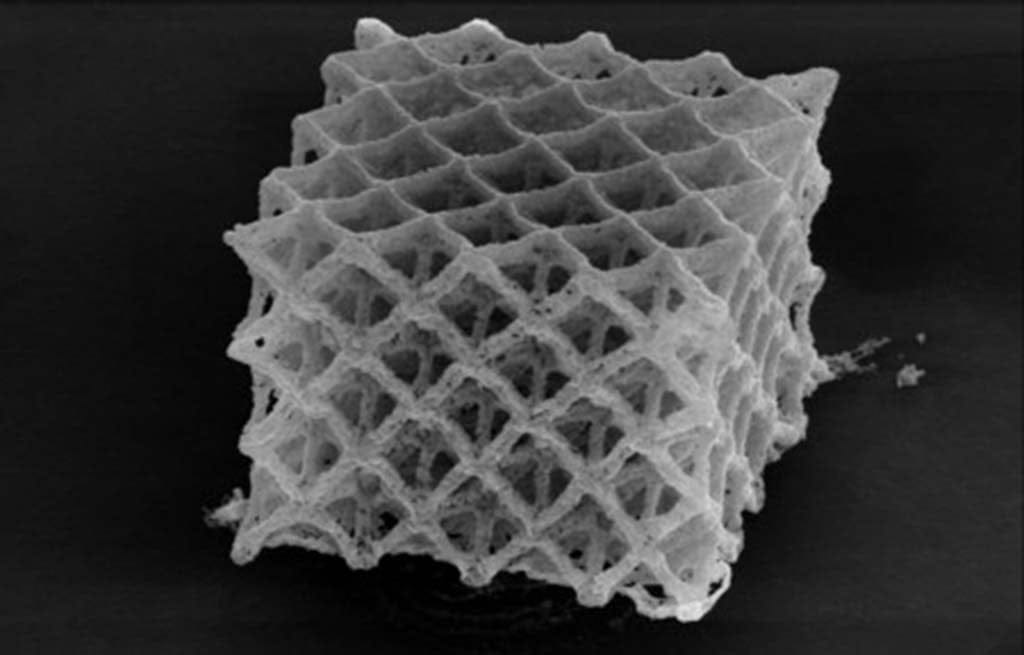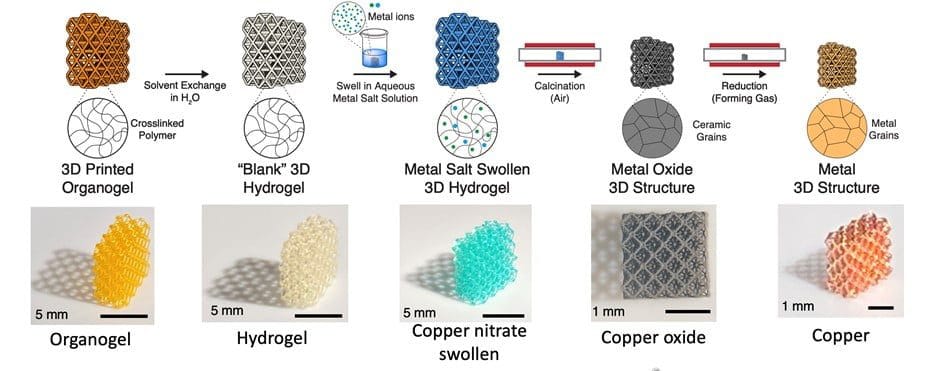Oct. 28, 2022 – Professor Julia Greer and Greer’s team from Caltech’s Kavli Institute for Nanosciences develop a new high-precision metal 3D printing technique based on hydrogel infusion molding for forming a wide range of fine metal parts with feature sizes around 100 microns. The related research results were published in Nature as a paper titled “Additive manufacturing ofmicro-architected metals via hydrogel infusion/additive manufacturing of micro-architected metals via hydrogel infusion” by Max A Saccone and Rebecca A Gallivan.
Papers Link:Additive manufacturing of micro-architected metals via hydrogel infusion

3D printing of metal parts with hydrogels
Overall, 3D printing of hydrogels mostly uses a vat photopolymerization process to produce structures. These structures are then filled with metal or ceramic precursors, which are then reacted into the final metal parts. Previously, Greer’s team has worked on metal oxides (i.e. zinc oxide), as well as fabricating electrodes. In general, researchers forming parts tend to use some very productive photopolymerization processes such as digital light processing (DLP), stereolithography (SLA), and mask SLA (mSLA) using standard printers and materials.
The team is still 3D printing hydrogels based on vat photopolymerization techniques (mainly DLP), then filling the structures with metal precursors and sintering them, a thermal process that results in metal parts. The team says it has made objects with dimensions of about 40 microns with very high hardness. In addition, the researchers believe the material could be tweaked to make even multilateral parts.
The 3D-printed lattice structures the researchers used for testing were made with a spot cure of about 50 microns, and the resulting parts were hard parts with a feature size of 100 microns. The researchers worked with nickel, silver and copper, as well as tungsten-niobium, a combination of refractory metals that are difficult to shape. They were also able to mix a variety of materials, such as copper and cobalt. A unique aspect of this work is that, starting with the hydrogel step, different metal salts can be put in different areas, which can then be sintered simultaneously. A curious detail is that the hardness seems to be 47% to 15% higher than expected, which may be something to be developed further. In general, the sintering process needs to be controlled, which can be a bit challenging for many geometries to industrialize. The shrinkage is about 60%, which can also limit geometry and process control.


Indirect metal 3D printing of small parts
This indirect metal 3D printing technology requires no new machines or setups by using standard chemicals and is very low cost. This could lead to this it will be quickly adopted on the customer side, as they have the necessary equipment and knowledge of the part process, and material manufacturers like Arkema or Stratasys’ would strongly support the further promotion of this process, and many parties could join forces to promote its industrialization. In addition, by using vat photopolymerization, they can ride on the “coattails” of this technology in terms of producing precise, minute details and features. The resulting parts are small and precise, and perhaps this technology could indeed be a very cost-effective option for creating microchannel mesh components.
Similar work to this technology includes direct-write 3D printing and two-photon photopolymerization. Another result of this technique being applied is that the vat photopolymerized parts are carbonized and become good conductors. Taken as a whole, the details related to hardness, refractory materials and thin beam lattice components here may be unique.
Now, other technologies similar to this exist. HoloAM, MetShape, Incus and Lithoz, for example, use a light-curing technology called “slurry SLA,” in which the resin is pre-addressed with metal particles and printed using a vat photopolymerization system. The part is then demolded and sintered. Of course, this requires many steps, and the part size for paste SLA is not large. Sintering can also expose shrinkage problems. However, for certain geometries, paste SLA can produce detailed parts with good internal surface texture (since the resin is a support and can be cleaned off). For slightly larger parts, there are also binder injection methods available, which can be a highly productive and inexpensive technique in itself. One could also consider lost wax casting and vat photopolymerization. For tiny parts, one might not consider material extrusion or powder bed melting. However, there are a number of microfabrication and printing techniques that may be competitive here.

All of these technologies are competing for a potentially very competitive space in which billions of optimized sub-centimeter to sub-micron components could be useful in manufacturing, electronics, medicine and industrial uses. The yields achievable by the companies that overcome this challenge could be staggering. MOSFET-like devices, heat sinks, electronic components, antennas, batteries, sensors and more could generate millions or even billions of parts in demand.
To do this, someone has to be able to make the right geometry at the right price with the right specifications. Applications such as matrix structures, filters, TPMS fields, meshes and flexible batteries may be best 3D printed with this technology compared to other technologies. A small and strong lattice would be a good application for this technology. Now, of course, it will need to be industrialized first and will require new equipment. This is still very early days, but could be a very fruitful approach.


